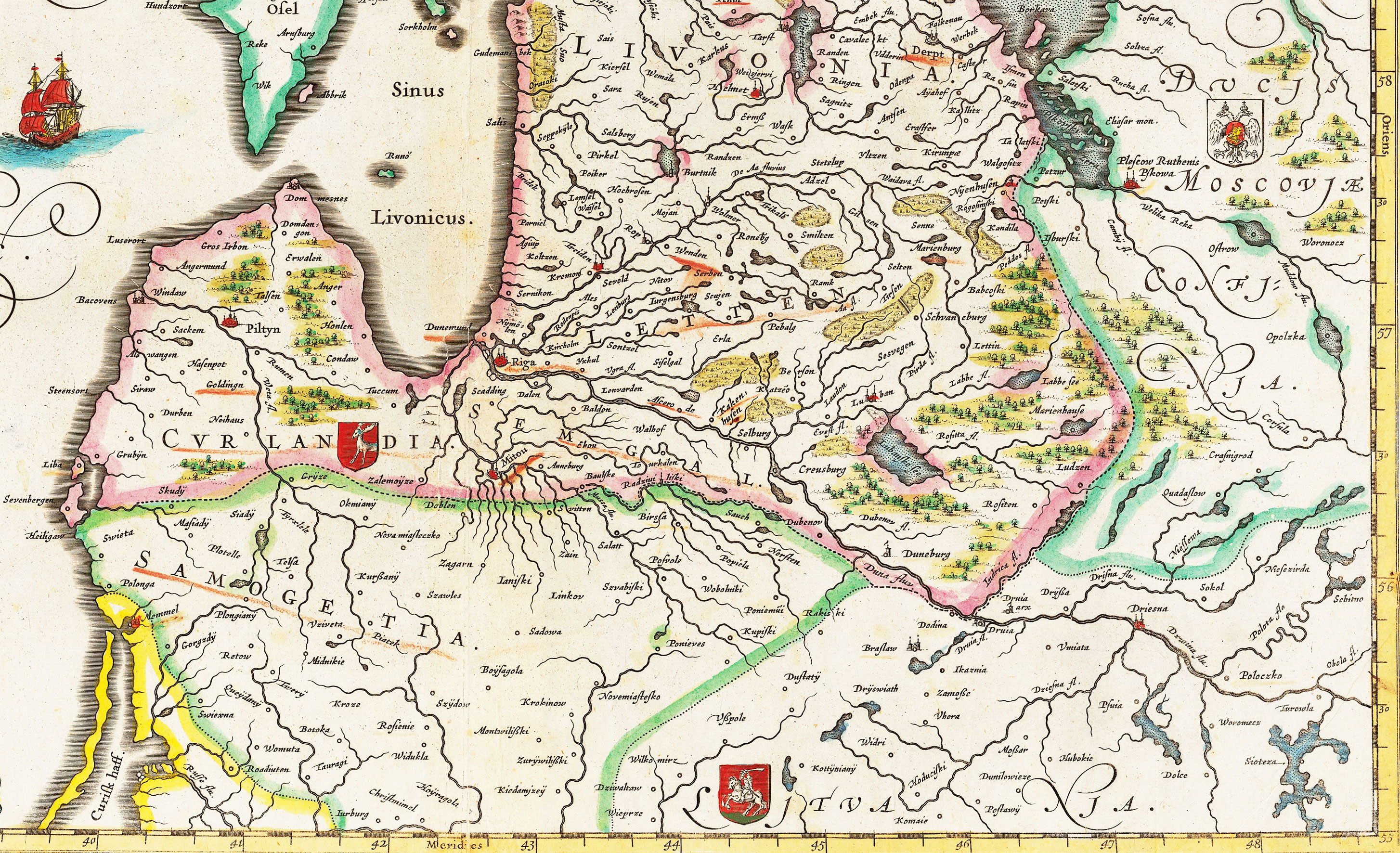Samogitians on:
[Wikipedia]
[Google]
[Amazon]
Samogitians ( Samogitian: ''žemaitē'', lt, žemaičiai, lv, žemaiši) are an ethnographic group of
 Samogitians lived in western Lithuania and were closely related to
Samogitians lived in western Lithuania and were closely related to Perepis.ru
(in
Short history of Samogitia
{{InterWiki, code=bat-smg Ethnic groups in Lithuania Samogitia
Lithuanians
Lithuanians ( lt, lietuviai) are a Baltic ethnic group. They are native to Lithuania, where they number around 2,378,118 people. Another million or two make up the Lithuanian diaspora, largely found in countries such as the United States, Uni ...
of the Samogitia
Samogitia or Žemaitija ( Samogitian: ''Žemaitėjė''; see below for alternative and historical names) is one of the five cultural regions of Lithuania and formerly one of the two core administrative divisions of the Grand Duchy of Lithuania ...
region, an ethnographic region of Lithuania. Many speak the Samogitian language
Samogitian ( sgs, žemaitiu kalba, link=no or sometimes ', ''žemaitiu šnekta'' or '; lt, žemaičių tarmė, žemaičių kalba) is an Eastern Baltic language spoken mostly in Samogitia (in the western part of Lithuania). In Lithuania, it is ...
, which in Lithuania is mostly considered a dialect of the Lithuanian language together with the Aukštaitian dialect. The Samogitian language differs the most from the standard Lithuanian language.
Even though Samogitians are politically not considered to be an ethnic group, 2,169 people declared their ethnicity as Samogitian during the Lithuanian census of 2011, of whom 53.9% live in Telšiai County
Telšiai County ( lt, Telšių apskritis) is one of ten counties in Lithuania. It is in the west of the country, and its capital
Capital may refer to:
Common uses
* Capital city, a municipality of primary status
** List of national capit ...
. The political recognition and cultural understanding of the Samogitian ethnicity has, however, changed drastically throughout the last few centuries as 448,022 people declared themselves Samogitians, not Lithuanians, in the 1897 Russian Empire census.
History
On 13 July 1260, the Samogitians decisively defeated the joint forces of theTeutonic Knights
The Order of Brothers of the German House of Saint Mary in Jerusalem, commonly known as the Teutonic Order, is a Catholic religious institution founded as a military society in Acre, Kingdom of Jerusalem. It was formed to aid Christians on ...
from Prussia
Prussia, , Old Prussian: ''Prūsa'' or ''Prūsija'' was a German state on the southeast coast of the Baltic Sea. It formed the German Empire under Prussian rule when it united the German states in 1871. It was ''de facto'' dissolved by an em ...
and Livonian Order
The Livonian Order was an autonomous branch of the Teutonic Order,
formed in 1237. From 1435 to 1561 it was a member of the Livonian Confederation.
History
The order was formed from the remnants of the Livonian Brothers of the Sword after the ...
from Livonia
Livonia ( liv, Līvõmō, et, Liivimaa, fi, Liivinmaa, German and Scandinavian languages: ', archaic German: ''Liefland'', nl, Lijfland, Latvian and lt, Livonija, pl, Inflanty, archaic English: ''Livland'', ''Liwlandia''; russian: Ли ...
in the Battle of Durbe. Some 150 knights were killed, including Livonian Master Burchard von Hornhausen
Burkhard von Hornhausen (* before 1252; † July 13 1260 in the Battle of Durbe) was from 1257 to 1260 Landmeister in Livonia of the Teutonic Order. He was the first commander and directed the construction of the Königsberg Castle.Walter James ...
and Prussian Land Marshal Henrik Botel.
 Samogitians lived in western Lithuania and were closely related to
Samogitians lived in western Lithuania and were closely related to Semigallians
Semigallians ( Latvian ''Zemgaļi''; lt, Žiemgaliai, also ''Zemgalians, Semigalls, Semigalians'') were the Baltic tribe that lived in the southcentral part of contemporary Latvia and northern Lithuania. They are noted for their long resistance ...
and Curonians
:''The Kursenieki are also sometimes known as Curonians.''
The Curonians or Kurs ( lv, kurši; lt, kuršiai; german: Kuren; non, Kúrir; orv, кърсь) were a Baltic tribe living on the shores of the Baltic Sea in what are now the western p ...
. In 1413, they became the last group of Europeans to convert to Christianity. Samogitians were one of the three main nations of the Grand Duchy of Lithuania
The Grand Duchy of Lithuania was a European state that existed from the 13th century to 1795, when the territory was partitioned among the Russian Empire, the Kingdom of Prussia, and the Habsburg Empire of Austria. The state was founded by Li ...
, Ruthenia, and Samogitia. In 1857, there were 418,824 people of Samogitian roots and 444,921 persons declared the Samogitian language as their mother tongue in 1897 in Kovno Governorate
Kovno Governorate ( rus, Ковенская губеpния, r=Kovenskaya guberniya; lt, Kauno gubernija) or Governorate of Kaunas was a governorate ('' guberniya'') of the Russian Empire. Its capital was Kaunas (Kovno in Russian). It was formed ...
. Currently Lithuania does not allow for declaration of Samogitian nationality in passports as it is not a recognized ethnicity. In list of ethnic groups of Russia
Russia, as the largest country in the world, has great ethnic diversity, is a multinational state, and is home to over 190 ethnic groups nationwide. However, demographically; ethnic Russians dominate the country's population. In the 2010 Census, r ...
there is one person who declared himself with "Zhemaijty".(in
Russian
Russian(s) refers to anything related to Russia, including:
*Russians (, ''russkiye''), an ethnic group of the East Slavic peoples, primarily living in Russia and neighboring countries
*Rossiyane (), Russian language term for all citizens and peo ...
)
Exonyms
Samogitians call themselves ''žemaitē'', although exonyms are used in different languages.References
External links
Short history of Samogitia
{{InterWiki, code=bat-smg Ethnic groups in Lithuania Samogitia